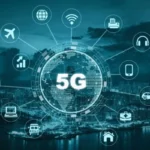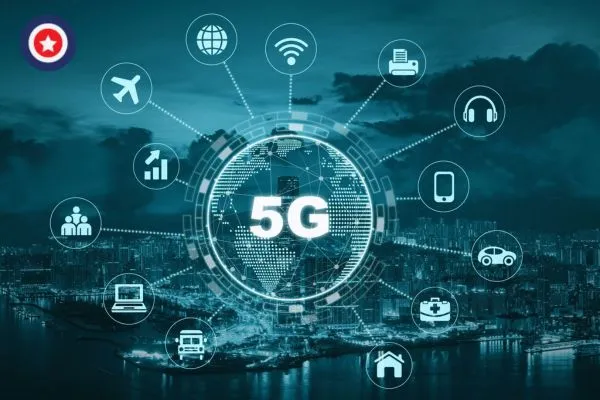
The Impact of 5G On Navigation Accuracy
October 8, 2024
The Science Behind Mapping Software: How It Works
October 9, 2024Have you whenever gotten lost inside a critical development, similar to a retail outlet or a clinical focus? It might be truly perplexing when there are no signs or advisers for direct you! Very much like GPS assists us with finding our direction outside, Indoor-Navigation assists us with exploring inside enormous spaces. In this article, we’ll investigate the difficulties of Indoor-Navigation and the thrilling arrangements innovation offers to assist us with tracking down our direction. How about we begin!
What is Indoor Navigation?
Indoor Navigation is the innovation that assists individuals with tracking down their direction in indoor spaces, such as shopping centers, air terminals, galleries, and places of business. Not at all like open air route, which depends on GPS, Indoor-Navigation should utilize various advances since GPS signals are powerless or nonexistent inside structures.
Challenges of Indoor Navigation
Indoor-Navigation presents a few special difficulties that can make seeing as your way interesting. How about we separate a portion of these difficulties:
1. Weak GPS Signals
As referenced before, GPS works best outside where satellites can convey clear messages. Inside structures, these signs can be hindered by walls and roofs. This implies that conventional GPS isn’t solid for Indoor-Navigation.
2. Complex Layouts
Numerous indoor spaces have confounded designs with different floors, rooms, and doors. For instance, a shopping center could have a few stores spread out over numerous levels. Without a reasonable format, getting lost is simple!
3. Lack of Standardization
Dissimilar to open air maps that have normalized highlights, indoor spaces shift significantly. Each building can have its own signs, images, and route frameworks. This absence of normalization can make it hard to make a widespread Indoor-Navigation framework.
4. Dynamic Environments
Indoor spaces frequently change. Stores can move, new structures can be added, or rooms can be reconfigured. This dynamism makes it trying to stay up with the latest.
Solutions for Indoor Navigation
Notwithstanding these difficulties, a few invigorating innovations are being created to work on Indoor Navigation solutions. Here are probably the most encouraging arrangements:
1. Wi-Fi–Positioning–Systems (WPS)
Wi-Fi arranging systems use Wi-Fi signs to choose your region inside a construction. This is the secret:
● Signal Strength: Your gadget estimates the strength of Wi-Fi signals from various switches inside the structure.
● Triangulation: By looking at these signs, the framework can locate your situation, very much like GPS does outside.
WPS is generally utilized in places like air terminals and shopping centers to assist guests with exploring.
2. Bluetooth Beacons
Bluetooth reference points are little gadgets that can be set all through a structure. They convey signals that can be gotten by your cell phone or different gadgets. This is the way they work:
● Area Mindfulness: When you stroll close to a guide, your gadget accepts its sign and can decide your nearness to that reference point.
● Intelligent Guides: Numerous applications use reference points to make intuitive guides, directing you bit by bit to your objective.
Bluetooth guides are perfect for galleries and stores, giving data about shows or advancements as you stroll by.
3. Augmented–Reality (AR)
Increased reality joins this present reality with computerized data. In Indoor-Navigation, AR can make seeing as your way significantly more straightforward:
● Visual Headings: Utilizing your cell phone camera, AR can overlay bearings on the screen, showing bolts and markers to direct you.
● Intelligent Encounters: Historical centers and displays can utilize AR to improve shows, giving extra data about how things are playing out.
Envision taking a gander at your telephone and seeing a shining way driving you to the closest bathroom!
4. Inertial-Navigation-Systems (INS)
Inertial route frameworks track your developments involving sensors in your gadget, like accelerometers and spinners. This is the secret:
● Development Following: As you walk, the framework estimates how far and in what bearing you move.
● Dead Retribution: By joining this information with known beginning stages, the framework can appraise your ongoing area, regardless of whether GPS signals are inaccessible.
INS is especially valuable where different signs might be feeble or inconsistent.
The Future of Indoor Navigation
The eventual fate of Indoor-Navigation looks splendid with proceeded with headways in innovation. Here are some designs to observe:
1. Integration of Technologies
We can hope to see a mix of various innovations cooperating for significantly more compelling route. For instance, utilizing Wi-Fi, Bluetooth, and AR together can make a consistent route insight.
2. Smart Building Features
As structures become more intelligent, they’ll consolidate advancements that work on Indoor-Navigation. For example, shrewd signage can change in light of the hour of day or extraordinary occasions, giving continuous data to guests.
3. User-Friendly Applications
Route applications are turning out to be more easy to understand, integrating highlights that make it simpler to track down your direction. Voice orders, simple to-understand maps, and customized route choices will improve the client experience.
Benefits of Effective Indoor Navigation
Further developing Indoor-Navigation can bring a few advantages:
1. Enhanced Visitor Experience
With better route, guests can investigate structures easily, making their encounters more pleasant. Whether it’s shopping, going to an occasion, or visiting an exhibition hall, finding your direction will be a lot more straightforward.
2. Increased Safety
In crises, compelling Indoor-Navigation can assist individuals with clearing securely and rapidly. Obvious indicators and solid route frameworks are fundamental for guaranteeing everybody knows how to leave a structure.
3. Business Advantages
For organizations, compelling route can prompt expanded consumer loyalty. Clients will undoubtedly return to a store if they can without a very remarkable stretch find what they’re looking for. Moreover, organizations can assemble information on pedestrian activity examples to advance their formats.
Conclusion
Indoor-Navigation is a fundamental piece of our undeniably perplexing world. While challenges like powerless GPS signals, complex formats, and changing conditions can make route precarious, invigorating arrangements are arising to assist us with tracking down our direction. Innovations like Wi-Fi situating frameworks, Bluetooth reference points, expanded reality, and inertial route frameworks are preparing for a future where getting lost inside turns into a relic of times gone by.
As innovation keeps on advancing, we can anticipate a significantly more easy to use and effective route insight in indoor spaces. So next time you visit a major structure, recall the astonishing innovations working in the background to assist you with exploring!




